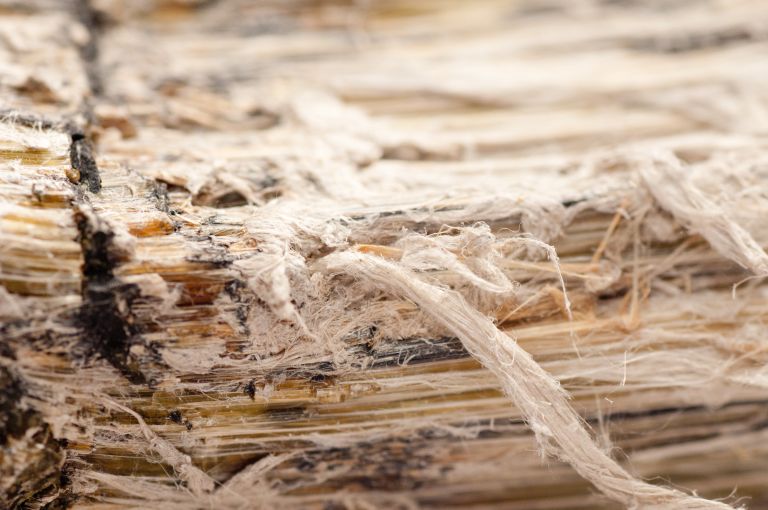
Asbestos is the generic term for a number of fibrous silicate minerals. Products made from asbestos cement – a bonded asbestos material – include fibro sheeting (flat and profiled) guttering and downpipes, as well as other pipes for water, drainage or flues, corrugated roofing sheets, roofing shingles and guttering.
Asbestos is a type of building material used in the domestic building industry between the 1940s and late 1980s and was widely used in commercial and industrial settings as early as the late 1800s.
Before the health risks were known, asbestos products were widely used because they were durable, fire-resistant and had good insulation properties.
The manufacture and use of asbestos products were banned nationally from 31 December 2003. This ban applies to the manufacture, supply, storage, sale, use, reuse, installation and replacement of asbestos.
ASBESTOS CONTAINING MATERIAL (ACM) is classed as either friable or non-friable.
FRIABLE ASBESTOS-CONTAINING MATERIAL (ACM)
This type of asbestos-containing material can be easily reduced to powder when crushed by hand, when dry.
These materials can contain high percentages of asbestos fibres and are more likely to release these fibres into the airborne environment when disturbed. As such, they pose a greater risk to health.
Friable materials must only be handled and removed by an asbestos removalist with an ‘A’ class licence.
Examples of friable asbestos-containing materials include:
- Some sprayed on fire retardants
- Soundproofing and insulation
- The backing of sheet vinyl and linoleum floor covering
- Thermal lagging, such as pipe insulation
- The lining on some old domestic heaters, ovens, and hot water cylinders.
Non-Friable (or Bonded) ASBESTOS CONTAINING MATERIAL (ACM)
These are materials in which the asbestos is firmly bound in the matrix of the material. These materials are unlikely to release measurable levels of asbestos fibre into the airborne environment if they are left undisturbed. Therefore, they generally pose a lower risk to health.
They are mainly made up of asbestos fibres together with a bonding compound (such as cement) and typically contain up to 15 per cent asbestos.
Non-friable materials containing asbestos are solid, and quite rigid and the asbestos fibres are tightly bound in the material. Non-friable materials containing asbestos are the most common in domestic houses. They are commonly called ‘fibro’, ‘asbestos cement’ and ‘AC sheeting’.
Non-friable asbestos removal requires a “B” class licence once a certain square metre rate is reached.
Examples of non-friable asbestos-containing materials include:
- Asbestos cement products (flat, profiled, and corrugated sheeting, and even downpipes)
- Plaster patching compounds
- Textured paint
- Vinyl floor covering
- Yes it can be due to the:
- Weathering
- Wear and tear
- Application of tools and equipment
- Accidental damage
- Fire damage
- Exposure to chemicals
Can non-friable become Friable?
If you think you have asbestos in your home, contact the Regulator in your state and have it checked out by an expert. In most cases, asbestos will remain Inert and not cause any health concerns until disturbed and the fibres become airborne.
Please let the experts deal with this product, there is a lot of skills and knowledge required to safely remove this “miracle mineral” and there are training courses people must undertake before they can work with asbestos.
Above is a bit of a write-up on asbestos and its hazards, I would like to acknowledge the learning resources group for some of the content.

